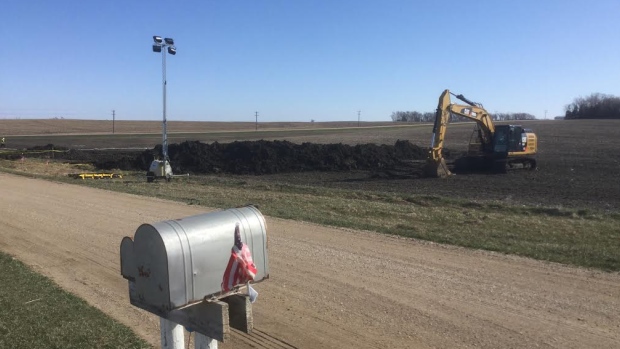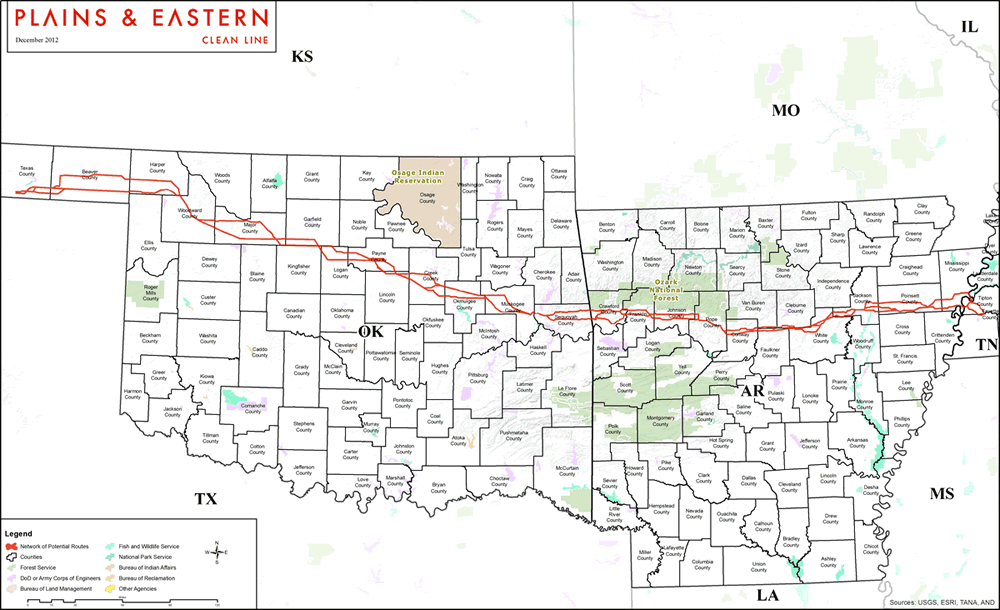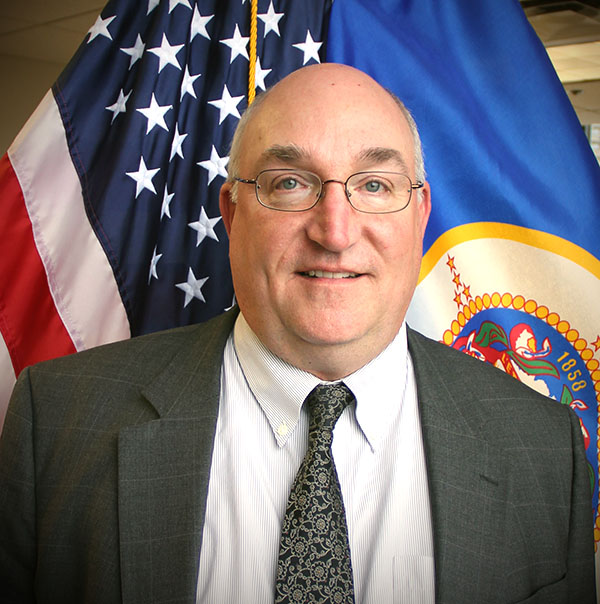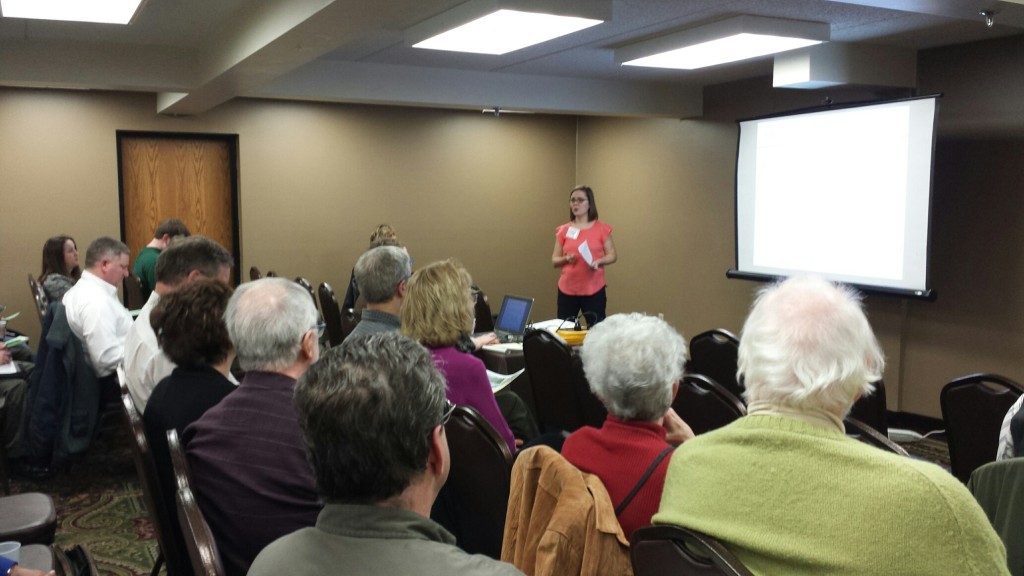On a roll — Bernie wins Wisconsin!
April 5th, 2016
Major pipeline rupture in SD
April 5th, 2016
There’s a big pipeline eruption underground, to the point that it’s bubbling up out of the ground, discovered by a passerby/landowner, near, but not at, a pumping station.
Why do I say big? Well, for a pipeline to spring a leak, and for it to reach the surface, it must be a lot of oil. And it will be a major effort to find the problem, fix it, and clean up the damage. I won’t use the words “spill” or “leak” to describe it, because those sound so pesky and innocent, and will stick to “eruption” or “disgorge” or some such, to convey the impact and damage expected from something like this.
Try finding news articles about this! Try, I dare ya! There’s not more than a handful.
Keystone pipeline shut down after crude leak in South Dakota
Keystone pipeline springs leak in South Dakota
TransCanada shuts down Keystone pipeline after oil spill in South Dakota
TransCanada shuts down Keystone pipeline after oil seeps to surface
This isn’t going to just go away. Cindy Myers has been posting some great photos, maybe those “supplied” to the CBC are hers? I’ve asked for permission to post… waiting for response.
DOE proceeds with Clean Line?!?!?!
March 28th, 2016
Here’s their press release:
And here is the full “Record of Decision” of DOE:
There’s a lot to read here, and I’m just starting. The primary question I have is what exactly it means that the DOE will “participate” and what that decision confers on the project proponents. Much of that is in the “Participation Agreement” of which there were drafts, this is the “Executed Version” that has conditions that CLEP must meet. Section 1222 is a financing provision, and having worked on a couple of projects that are USDA RUS funded, how do they get from financial wheeler-dealering to the idea that DOE participation could circumvent state jurisdiction and powers?
The entire Arkansas delegation has come out strongly against it, slamming the DOE decision. Now how about they introduce a bill to repeal Section 1222? That ought to take care of it!
HF 3480 – Wind Noise and Rulemaking Bill
March 24th, 2016
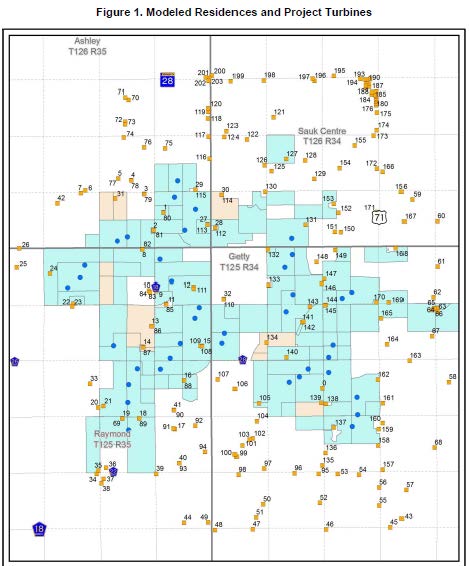 Old siting map for Black Oak/Getty Wind Project
Old siting map for Black Oak/Getty Wind Project
Heads up! HF 3480 has been introduced and referred to the House Environment and Natural Resources Committee. Contact committee members with your thoughts about this bill.
We’ve got major problems regarding wind generation: Wind advocates got their legislation through a decade ago (216F ) to allow wind siting with exemption from environmental review, with the false presumption that there are no impacts. Wind project promoters have often presented misleading and false information regarding their company, financing, projects, and impacts, and the industry will do ANYTHING to get wind projects sited. It does not help that one of the primary lobbyists responsible for passage of Minn. Stat. 216F is Bill Grant, now Deputy Commissioner at Commerce in charge of all things “energy,” including siting of wind projects under 216F:
There needs to be legal and administrative recognition and definition of the impacts of wind turbines. If Minnesota wants to increase wind generation, there must be respectful siting of wind. Although solar is ramping up, wind generation is not going to disappear, so project proponents and regulators had best pay attention and address public interest, safety, and protection considerations. It is the Public Utilities Commission’s job to regulate. Get to work! Do your job!
HF 3480 has been introduced to address long problematic wind noise issues, to mandate a rulemaking at MPCA to establish wind noise standards, and to mandate revision of wind setbacks in light of the new MPCA noise standards.
Here’s HF3480.0. Check it out!
Here are my comments on it, very quick review:
Section 1 of the bill is too subjective, with no standards (the basic problem with 216F!) for amendment of an existing project permit. The Commission needs the MPCA noise rules as a basis for a decision.
The one thing that just MUST be changed is the reference at 2.19 to “good cause.” This notion of “good cause” was a big problem in the Goodhue Wind docket, where a hearing was held on whether there was “good cause,” and, well, it was a mess because it’s so arbitrary.
Also, legislatively mandated rulemaking hasn’t worked well. Take a look at the mess with the mandated silica sand mining rulemaking!
Winding up? It’s still languishing…
Silica Sand Rulemaking — Mtg. Thursday 8/28
We need to learn from that mess…
Anyway, HF 3480 has been referred to the House Environment and Natural Resources committee. It’s time to address wind noise problems and require environmental review for wind projects. Contact committee members with your thoughts about this bill.
And another MPCA listening session
March 10th, 2016
And last night in Rochester, more of the MPCA “Clean Power Plan” listening sessions. This one was less well attended that Monday’s in Minneapolis, but packed into a much smaller, almost claustrophobic sized room. Many concerns were raised, in large part because the “Clean Power Plan” remains a mystery — there is no MPCA plan for us to check out and comment on, and the federal Supreme Court put the EPA’s plan on hold.
The MPCA has been meeting with “stakeholders” which is primarily utilities, with a few energy wonks also attending — see this link, and scroll down for meetings and materials:
A turnout of this size, both last night and the night before, means that yes, people are interested and concerned, and I hope everyone stays in the loop and participates.

